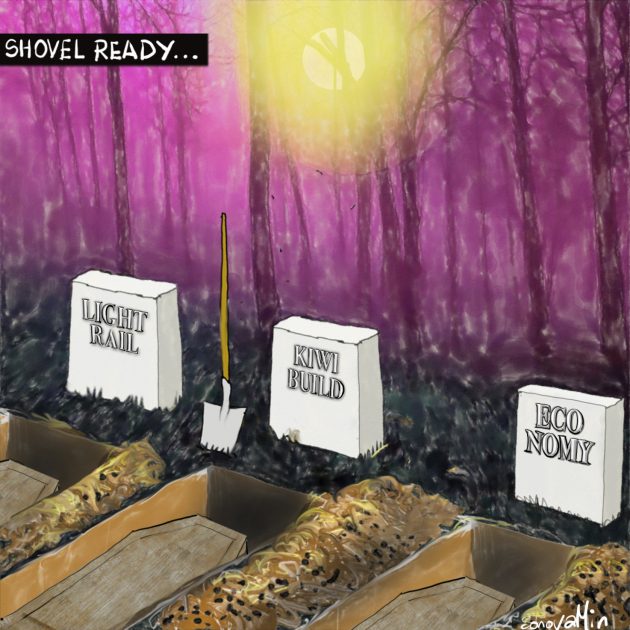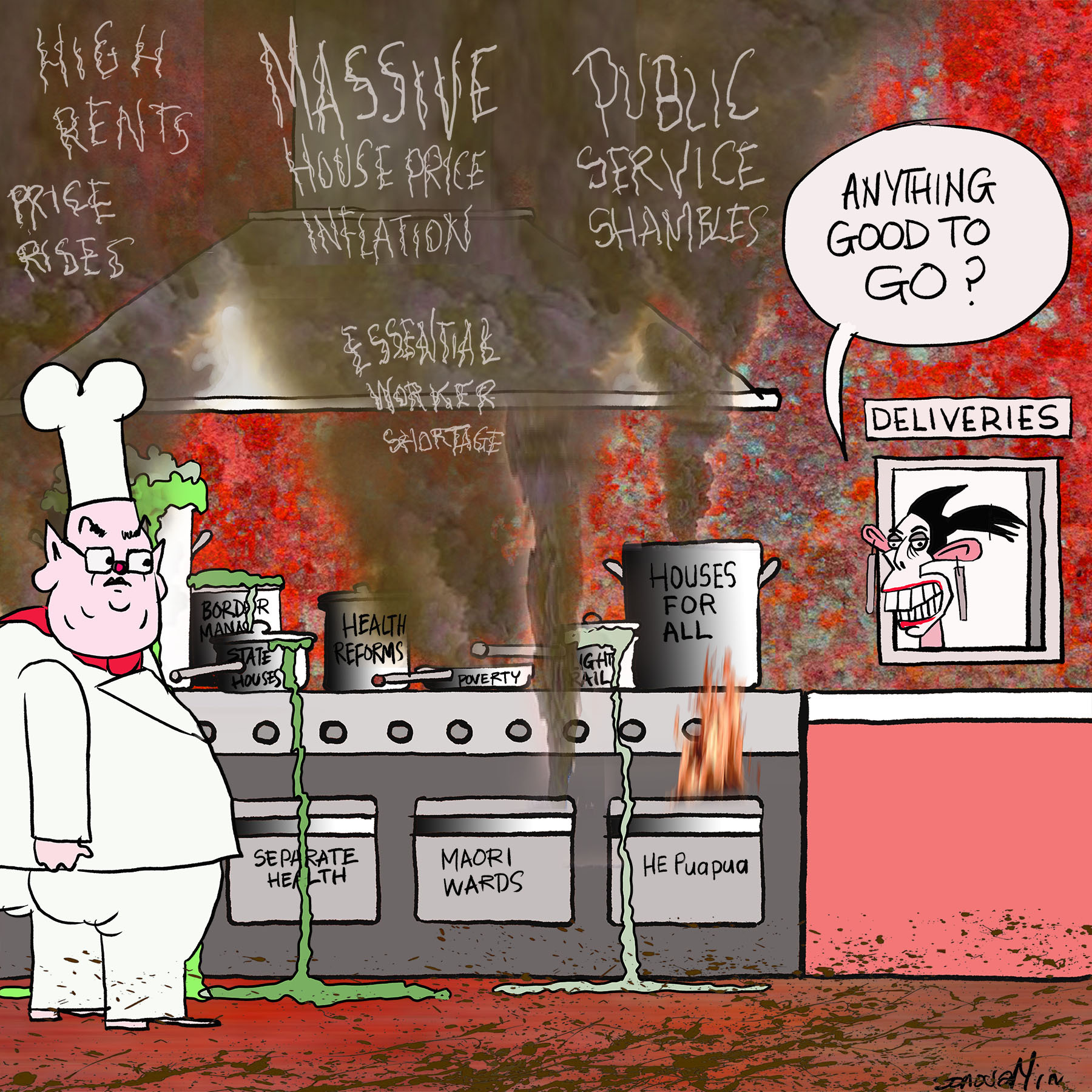During the Great Depression of the 1930s, governments all around the world borrowed – or printed – money to stimulate the economy. It was enormously successful because the plan almost everywhere was to get people out of the dole queues and back into work by building infrastructure. That was how so many of our roads, commercial buildings and state houses were built in the 1930s. This was not just in New Zealand: the same thing happened in Australia, Britain, Canada and the USA. All those Art Deco styled buildings that still stand in cities around the world are testament to a scheme that worked: the Great Depression was no more. Jobs were created, lives were improved, and the standard of living was improved with better roads, better commercial buildings and better housing, although unemployment remained high until the start of the Second World War.
What exactly are we going to have to show for the government’s borrowing this time around? A better health service with new hospitals? New roads, bridges and highways? Lots of new state houses for all those homeless people currently living in motels? After all, when you are borrowing a billion dollars a week, you expect to have something to show for it: right?
Nothing. We will have nothing to show for it. This government is spending the entire amount on the medical response, lockdowns and business support made necessary because of the enforced lockdowns… and a few pet projects of their own. In 18 months, in spite of the obvious failure of lockdowns in other countries and the fact that we are now getting on with the vaccine rollout, we are still being subjected to the harshest levels of lockdowns in the world… except, possibly, for North Korea.
At the end of 2019, going into an election year, the government suddenly discovered that they could fund some infrastructure projects. They pointed out that money had never been cheaper, so it would be a good time to borrow and build. This was the dawning of Grant Robertson’s ‘shovel-ready’ projects, which of course did not exist because all projects proposed by the previous National Government had been shelved unless it was too late to stop them. Nevertheless, it was a good plan, even if it was only ever an election bribe. The last time a significant amount of infrastructure building had taken place was in the 1930s, and the country’s roads, sewerage and water systems were desperately in need of investment; not to mention the new roads needed to give access to areas that had developed in the last 80 years. But this all made sense, didn’t it? Labour governments are the ones that get on and do things. National governments just maintain the status quo, right?
Well, that is what I am always being told. Whether or not that was once true, it certainly is a complete myth nowadays.

COVID put an end to all that. Let’s be honest: we were all totally bewildered in the early days of the pandemic. We believed that the death toll was going to be much higher than it turned out to be. In some countries, the death toll was devastating, but New Zealand has a low population and people, in general, don’t live on top of one another. That in itself has helped save us from devastation.
I can forgive the government for almost anything they did in the first few months of the pandemic because this really was a new experience for most of us, and particularly for a very inexperienced and inept government. Financial support was needed to keep people employed and to prop up businesses in enforced lockdowns. But subsequent lockdowns and government support have been overly cautious, and have resulted in the government borrowing much more than necessary. We are currently in our sixth lockdown, and the entire country was put into Level 4 lockdown for just a single case. The government has been borrowing to provide business support to businesses that shouldn’t have needed it. The South Island should have been allowed to continue as normal in the current lockdown, which would have generated tax revenue and keep borrowings under control. But no.
The next problem we are going to have to face is inflation. Around the world, interest rates are beginning to rise. Quantitative easing is always inflationary, and the consequence is higher interest rates. This means that the debt repayment will be made at higher interest rates than expected, which will slow down the rate of repayment, possibly substantially. It was short-sighted of Grant Robertson to say in 2019 that money has ‘never been cheaper’. Maybe not, but there was no way of locking in those low rates indefinitely. A more experienced and circumspect minister of finance would have shown caution. But all Labour governments spend taxpayers’ money like there is no tomorrow, and this one is worse than most.
My prediction for all this? Tax increases. Let’s face it: Labour governments love those too, and they will blame COVID for increasing tax rates on middle-income earners.
Once we come out of all of this – if we ever do – the country will be much poorer than it was at the beginning of the pandemic. There will be no money for hospitals, roads, water and sewerage systems, new classrooms or much-needed funding of new drugs. We will be paying off debt for decades to come. As a small country we are prone to shocks much more than countries with bigger populations, so what happens if there is another major earthquake, like Kaikoura or Christchurch? What if there are more economic shocks, like the Chinese real estate company Evergrande falling over? Prudent financial management from the previous National government put us in a good place if disaster struck, as indeed it did when they were in charge, but this Labour Government, spending like there is no tomorrow, has left us with no reserves, reduced GDP and significantly more debt than we have ever had.
I do not blame the government for the pandemic. Obviously, that is not their fault. Their response to it, however, shows them as a government way out of its depth, with no understanding of economic matters and no idea how to open up the country and get our lives back to normal. So much could have been done to limit borrowings and stimulate economic activity, but it is too late now. The debt will be a millstone around the neck of all New Zealanders for decades to come… all for a total of 26 deaths.
But when you have a government that takes advice from ‘experts’ such as Siouxsie Wiles, Michael Baker and Shaun Hendy, what else can you expect?
Please share this article so that others can discover The BFD.

